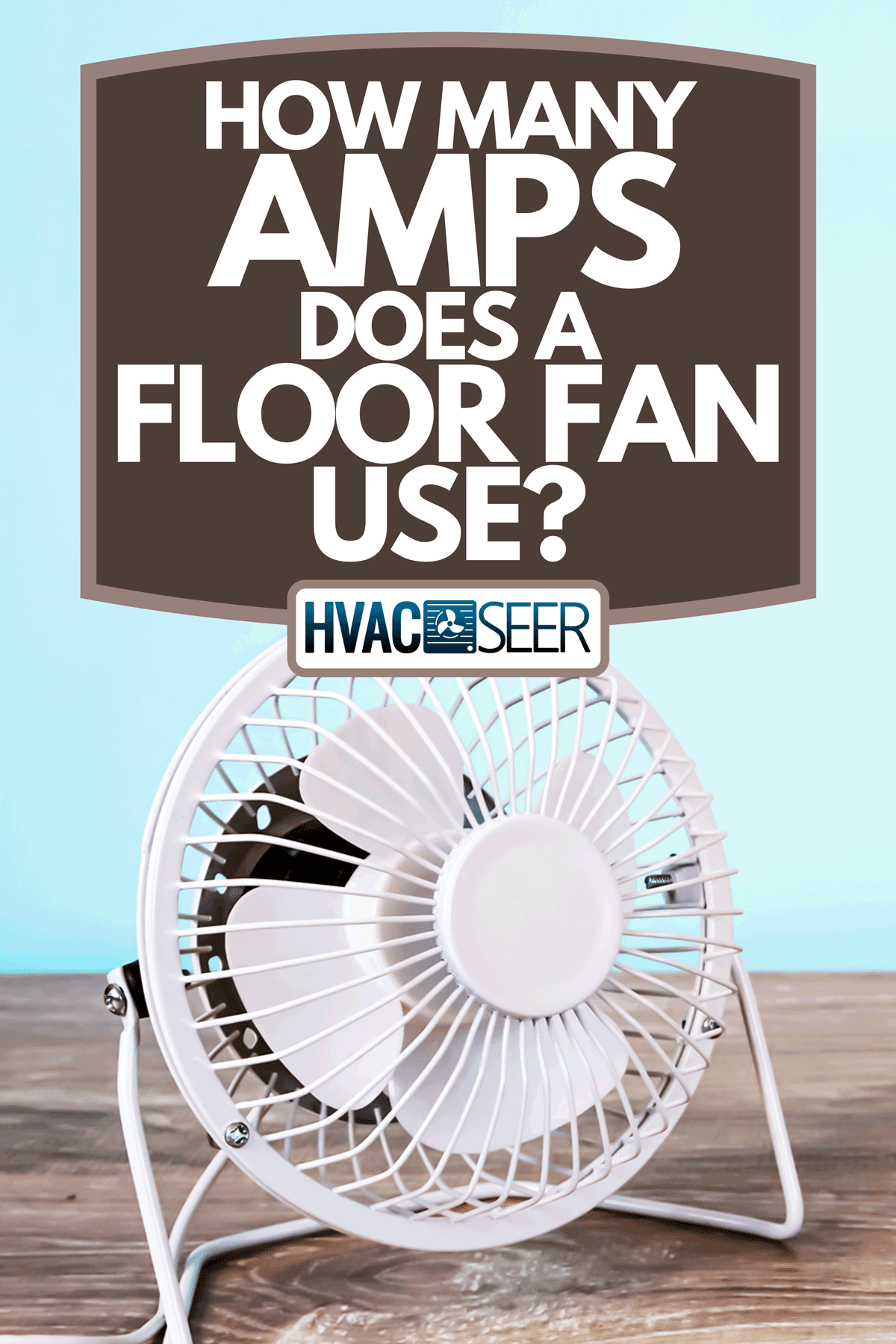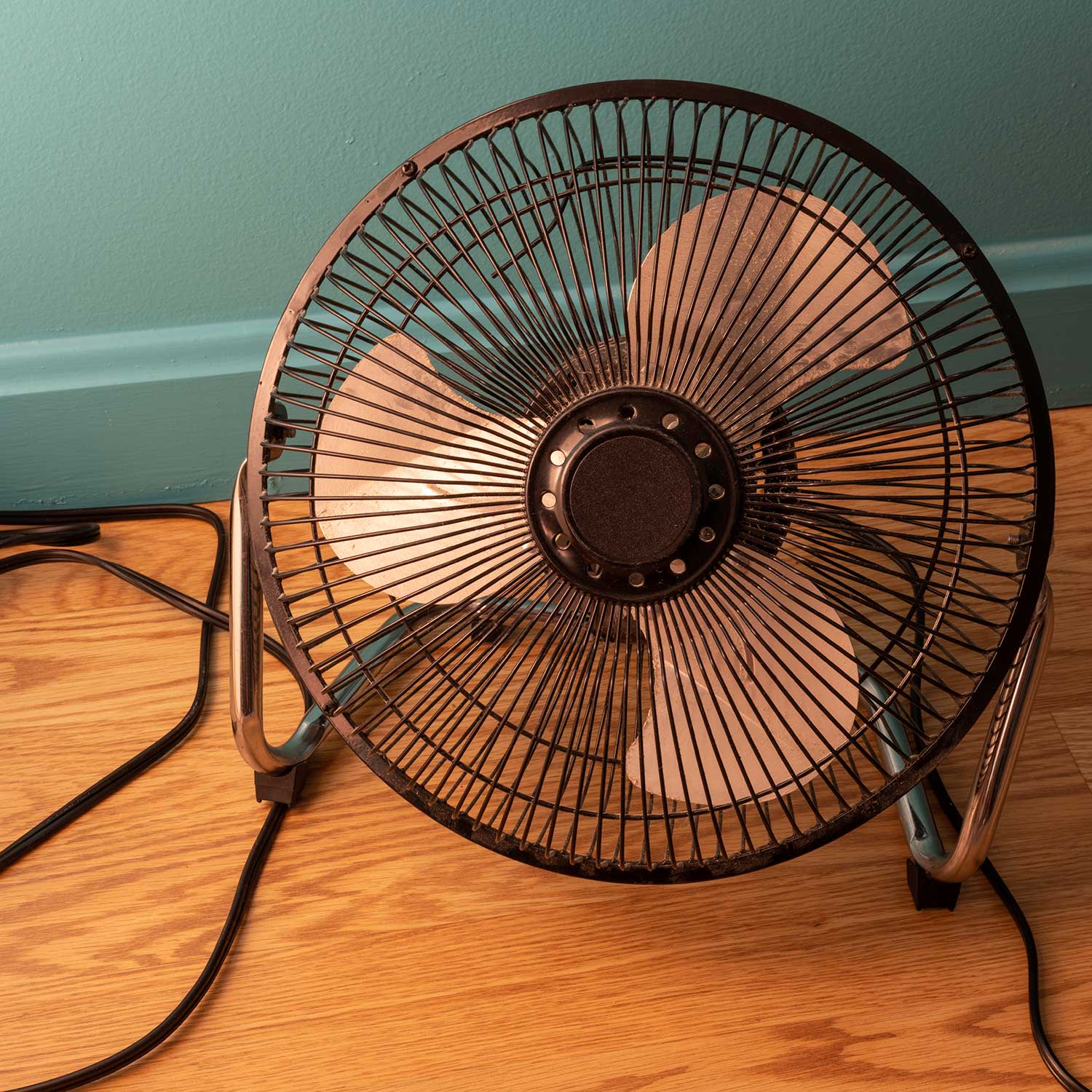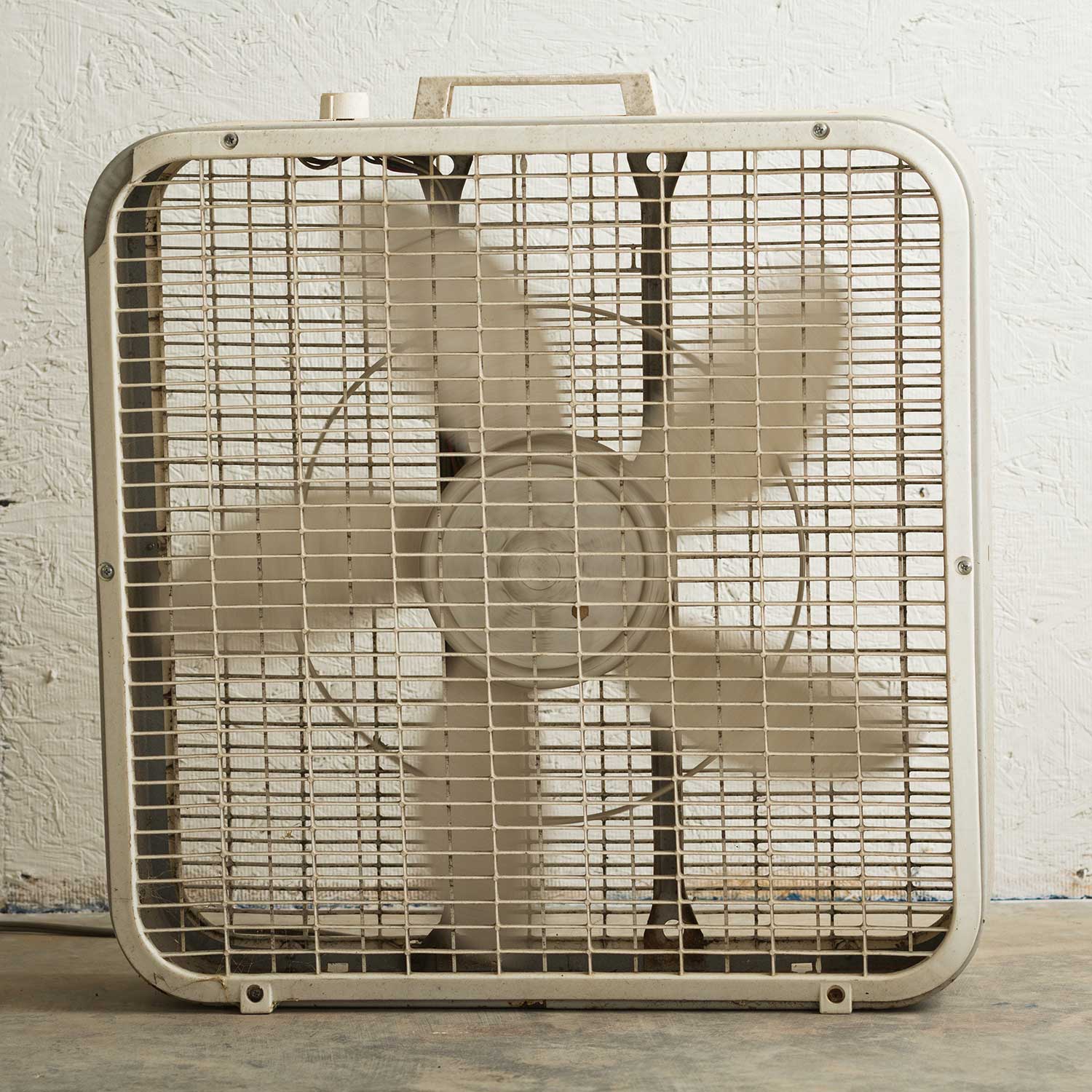Floor fans are easy to use and multipurpose. In the summers, the air that they blow helps to keep our bodies cool. They also make excellent options when you need to dry an area out. But you are wondering, how many amps do these fans require? In this post, we provide a thorough answer to your question using industry professional knowledge and research.
Depending on their size and construction, floor fans draw anywhere from 0.3 amps to around 3 amps. This significant range coincides with a large range of power and price. Usually, you can find the amps required for a specific fan on the label or within the sale information. Very strong floor fans will pull even more amps than the range listed here.
Keep reading the rest of this post for more details on the amp draw of floor fans. We cover the primary type of floor fans, including box fans, stand fans, tower fans, and industrial round fans. We also cover the definition of amps and volts and how to determine the electrical requirements of the above fans types. To conclude, we answer several related questions.

What is an Amp?
Put simply, and according to this article from Northwestern University, an amp is a measure of how many electrons are flowing through a circuit. In other words, you can think of amps similar to a car's horsepower. The more amps, the more instantaneous power an appliance is drawing.
However, knowing the amps alone does not account for the full story of power. That is to say, to understand the actual power requirements and cost of running a fan, you need to also know the volts and watts. Be warned; if you draw too many amps through a circuit, you may burn out wires or pop a breaker.
What is a Volt?
Put simply; a volt is a measure of how many amps can easily flow through a circuit at any given time. The more volts of power, the easier it is for the amps to reach the appliance's electric motor. To use the above horsepower analogy, think of more volts as a wider roadway that carries more horses. For a more detailed description of volts, read this definition from the Merriam-Webster Dictionary.
Understanding Fan Power Requirements
Generally, domestic power is sold by the watt or kilowatt. Watts are a combination of volts times amps. This means that to calculate the power requirement of a floor fan - you need both the volts and the amps. Once you have the watts (Volts x Amps = Watts) you can compare the electricity requirements of different fans.
The higher the watts of a fan, the more it will cost to run and the stronger it will blow depending on motor efficiency. Take note; often fans have different settings, which will each use different total watts. Usually, you can find the watts, volts, and/or amps required on appliance labels or with the appliance selling information from a web page or an owner's manual.
DC Amps vs. AC Amps
While shopping for floor fans, you might notice that some fans use AC electricity while some fans use DC electricity. For the lay user of a fan, these two types are not significantly different. DC fans do come with converters, which change the outlet power from AC to DC. In terms of amps, one amp of DC power is the same as one amp of AC power.
Amp Requirements of Common Floor Fan Types

Often, floor fans are sold without a label that describes the amps they require. Since amps is a measure you are concerned about, this can be very frustrating. To help you in your shopping process, we review the common floor fan types and the general amperes that they draw. We also provide a specific example of each floor fan type.
Be aware; it is often possible to find the amps of an appliance with a little digging. Even if amps are not listed specifically, with a little algebra, you can use the equation of Amps x Volts = Watts to arrive at the required amps.
Further, the amp information is often listed on a label affixed directly to the appliance. Unfortuately, the information on that label is not always copied over to internet sales pages.
Box Fan
For many, a box fan will be the first image that pops into their head when they hear the term floor fan. This is because these fans are cheap to run, cheap to buy, and easy to move around. Further, they generally require on the low end of amperage of all of the floor fans discussed here.
Click here for a well-reviewed box fan from Amazon.
An example of a box fan is the 20-inch version linked above. This fan requires 0.45 amps and runs on 120 volts for a wattage total of 55. Box fans range in their amp requirements from less than 1 amp and up but generally fall in the lower end of the amperage range for floor fans.
Stand Fans
Stand fans have the additional advantage of tall stems, which allows them to easily blow air to areas farther from the floor. In addition, stand fans often come with oscillation options. Since their bases are still usually placed on the floor, these fans qualify as floor fans. Generally, stand fans use a few more amps than box fans.
Click here for this 12-speed oscillating stand fan from Amazon.
The above stand fan requires 2.5 amps of electricity, which is much more than the requirements for a box fan. However, many stand fans push many more cubic feet of air per minute (CFM) than the average box fan. The fans which push more CFM usually also draw a heavier amp load.
Tower Fans
Tower fans are the newest type of floor fans on the market. Their diminutive construction makes them popular for small apartments and other locations with limited space.
Click here for a well-reviewed tower fan from Amazon.
This stand fan used 0.42 amps with 120 volts for a total wattage of 50. Often, fans such as this one also come with remote controls, which allows you to adjust their setting from across the room. Most tower fans use around 0.5 amps, but more powerful versions pull more amperage.
Industrial Round Fan
These fans are the ticket if you really need to move some air. Uses include whole shop/garage cooling or when you need to dry out large areas. Sometimes contractors will use this type of fan to help paint or other finish dry or to help keep a job site cool.
Click here for a well-reviewed industrial floor fan from Amazon.
Like the stand fan, this fan uses 2.5 amps. Partially because of this higher amperage, this floor fan puts out more CFM of air than most of the other fans linked here. This additional wind power also comes from the type of motor and the housing design of this type of floor fan. Very powerful and more expensive industrial fans generally pull more amps.
How many amps does a 12-volt fan use?
Different 12-volt fans generally use draw a different number of amps. However, the small number of volts (12 volts) also means the total amperage draw is also on the low side. Take the fan linked below. This 12-volt fan puts out 8 watts of electricity. Using our Volts x Amps = Watts equation, we can determine that the fan used 0.6 amps.
Click here for a 12-volt fan from Amazon.
Does a floor fan use a lot of electricity?

Generally speaking, floor fans do not use a significant amount of energy. That being said, the more watts your fan draws, the higher the energy cost of running it. Compared to many other types of appliances, such as power tools and refrigerators, fans require a small amount of electricity to run.
Does leaving a fan on waste electricity?
It depends. If your goal is to cool yourself, leaving a fan on does waste electricity. However, if you are trying to dry out something, leaving a fan on might be just the ticket.
Why you ask, do fans not make the air cooler if you are not in the room? This is because fans are simply pulling hot air from one part of a room to another - they do not change air temperature. In fact, their motors add heat to the air. Instead, the fan air aids in our natural cooling process of sweating. This is because as more air moves over your skin faster, more heat is lost.
You can read more about this phenomenon in this article from how stuff works or in this article from HVAC seer about evaporative coolers: 14 Types Of Evaporative Cooler And Brands To Know.
How much voltage is in a floor fan?
It is most common for floor fans in the United States to use 120 volts. However, the voltage can vary based on the specific fan in question. Other relatively common floor fan voltages are 220 volts, 115 volts, and 60 volts. The only way to be sure how much voltage your fan uses is to read the label or to consult an electrician who can use high-tech equipment.
How long can you run a box fan?

Modern box fans are built to run a long time. In fact, you can probably run your box fan for as long as you want to - that is to say, 24 hours a day and 7 days a week. That being said, if you run your fan while you are not in the room, you are just wasting electricity and are not providing any cooling.
In Closing
For more reading on this topic from HVAC Seer, check out these great articles:
- How Long Should You Run An Attic Fan?
- Do Ceiling Fans Help AC?
- What Size Generator Do I Need To Run A Window Air Conditioner?





